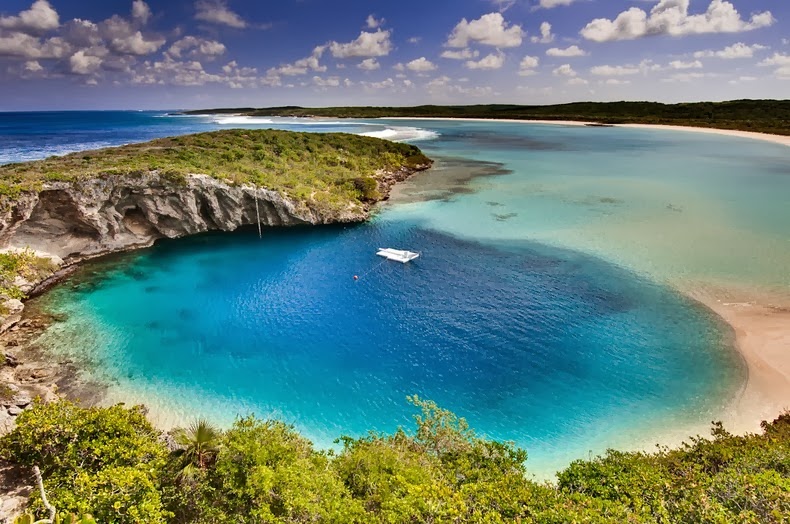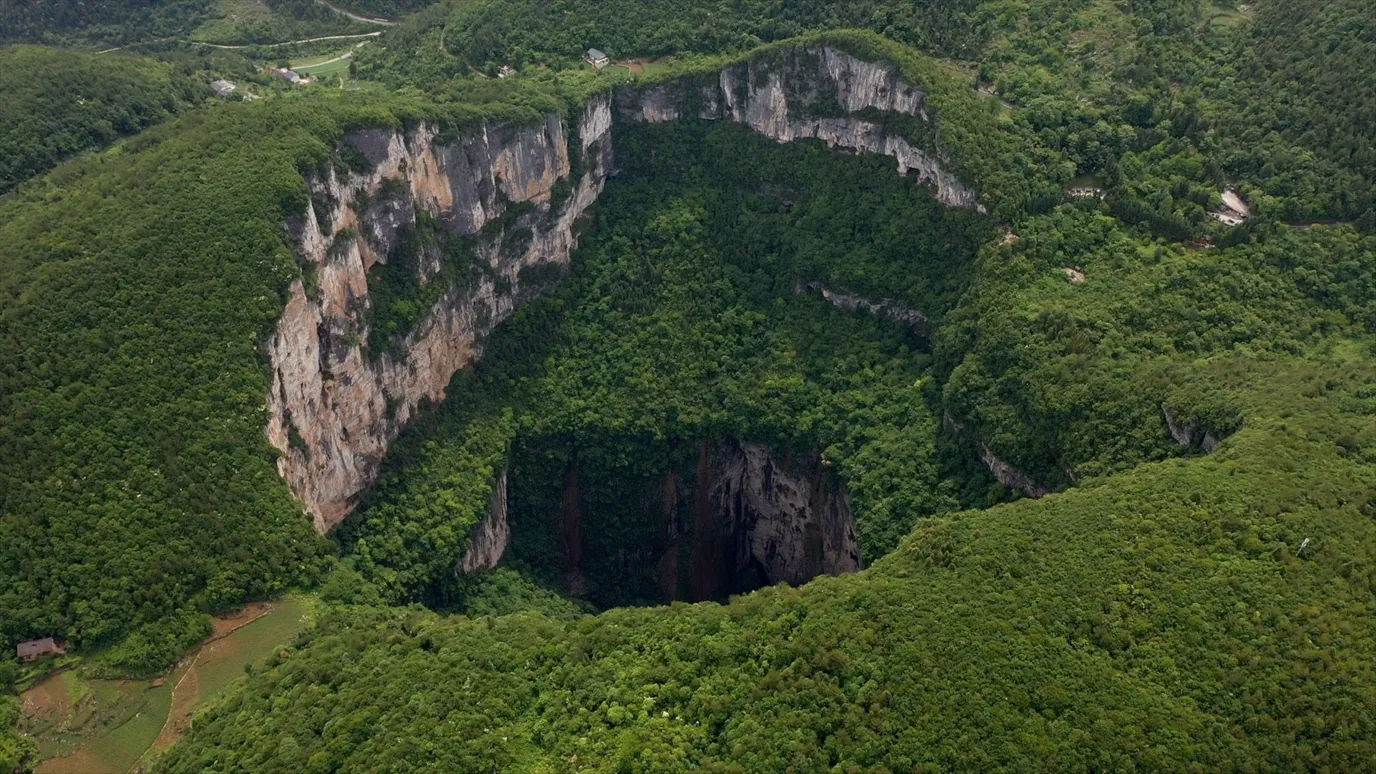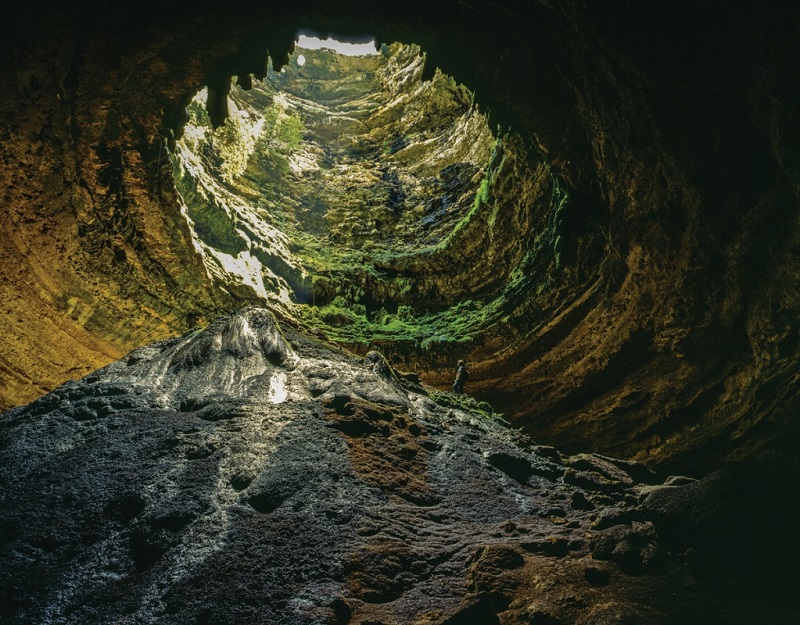
Introduction
Sinkholes are geological phenomena that occur when the ground suddenly collapses to create a depression or hole in the Earth’s surface. They can vary in size from small and inconspicuous to massive, posing significant risks to both property and human safety. These natural phenomena can form due to various geological processes and can be found all over the world. Sinkholes can have a profound impact on the environment and human activities. They can damage infrastructure, swallow buildings and roads, and disrupt ecosystems. At the same time, they often reveal valuable geological information about the Earth’s subsurface and can provide unique opportunities for scientific research. In this exploration of famous sinkholes from around the world, we will delve into some of the most remarkable examples, each with its own distinctive characteristics and story. Join us as we journey through the intriguing world of sinkholes and discover the fascinating processes that shape our Earth’s surface.
The Great Blue Hole, Belize:

Located off the coast of Belize in the Caribbean Sea, The Great Blue Hole is a massive underwater sinkhole known for its stunning clear blue waters. It’s circular in shape and approximately 300 meters (984 feet) in diameter and 124 meters (407 feet) deep.The geological significance that sets it apart is its intriguing geological history. It formed during a time when sea levels were much lower, and the site was a dry cave system. Today, it attracts scuba divers from across the globe who explore its crystal-clear depths, discovering ancient stalactites and stalagmites submerged beneath the sea.
Dean’s Blue Hole, Bahamas:

Located in the Long Island, Bahamas, Dean’s Blue Hole is the world’s deepest known saltwater blue hole, reaching a depth of about 202 meters (663 feet). It is a vertical underwater cave and a popular spot for divers and free divers to test their limits. This vertical underwater cave’s unique attributes make it a sought-after destination for divers and free divers. The distinct contrast between its deep azure center and the surrounding turquoise waters adds to its allure, providing a challenging but rewarding experience for those who explore its depths.
Xiaozhai Tiankeng, China:

Xiaozhai Tiankeng, also known as Xiaozhai Heavenly Pit, is a colossal collapse-type sinkhole found in China’s Shaanxi Province. This geological wonder boasts a rare triple-trough structure, with dimensions measuring around 511 meters (1,677 feet) in length, width, and depth. Its sheer size and dramatic landscape attract researchers and adventurers alike, offering a glimpse into the geological processes that shaped it over millennia.
Sima Humboldt and Sima Martel, Venezuela:

Tucked away in the remote Sarisariñama tepui within Venezuela’s Canaima National Park, Sima Humboldt and Sima Martel stand as awe-inspiring sinkholes of extraordinary proportions. Sima Humboldt, in particular, astounds with a diameter of approximately 352 meters (1,155 feet) and a depth of 314 meters (1,030 feet). These sinkholes, situated in an ancient geological formation known as a tepui, remain largely inaccessible, adding an air of mystique to their beauty.
Berezniki Sinkhole, Russia:

The Berezniki Sinkhole in Russia is a stark reminder of the impact of human activities on geological formations. It resulted from underground salt mining operations and measures about 40 meters (131 feet) deep. Beyond its relatively shallow dimensions, this sinkhole has disrupted local infrastructure and serves as a cautionary tale about responsible resource extraction.
Guatemala City Sinkhole, Guatemala:

It is located is Guatemala City, Guatemala. In 2010, a sudden and catastrophic sinkhole opened up in the capital city of Guatemala. It measured approximately 20 meters (66 feet) in diameter and 30 meters (98 feet) deep, causing the collapse of buildings and fatalities. This incident was attributed to a combination of factors, including the region’s volcanic activity and heavy rainfall that triggered the collapse of an underground cavity. The Guatemala City Sinkhole serves as a somber example of the potential dangers posed by sinkholes, emphasizing the need for geological monitoring and responsible urban planning.
Devil’s Sinkhole, Texas, USA:

Nestled in Edwards County, Texas, Devil’s Sinkhole is a captivating vertical collapse-type sinkhole that plunges to a depth of approximately 50 meters (160 feet). However, what truly distinguishes this geological feature is its role as a sanctuary for Mexican free-tailed bats. Thousands of these bats call Devil’s Sinkhole home, emerging from its depths in the evening to embark on their nightly hunts for insects. The sinkhole’s limestone walls provide ideal roosting spots for the bats, making it a prime location for bat enthusiasts and researchers.
Daisetta Sinkhole, Texas, USA:

In 2008, the Daisetta Sinkhole made headlines when it suddenly emerged in Daisetta, Texas. This sinkhole reached a maximum width of approximately 250 meters (820 feet) and a depth of about 24 meters (80 feet). The event caused considerable concern for local residents and authorities as it threatened homes and infrastructure. While it didn’t result from natural geological processes like some other sinkholes, it highlighted the potential risks associated with land subsidence and the importance of monitoring areas prone to such phenomena. It also triggered extensive efforts to study and address the sinkhole’s impact on the community.
Sotano de las Golondrinas, Mexico:

The Sotano de las Golondrinas, meaning the “Cave of the Swallows” in Spanish, is a breathtaking pit cave in Mexico. What sets it apart is its remarkable depth, plunging to approximately 512 meters (1,677 feet), making it one of the deepest known cave shafts in the world. This sinkhole is renowned among caving enthusiasts and adventure seekers who explore its depths. Additionally, it serves as a vital habitat for various species of birds, including the white-collared swift. Each day, thousands of birds emerge from the sinkhole’s depths, creating a mesmerizing spectacle. Sotano de las Golondrinas exemplifies the intersection of geological wonders and biodiversity, offering a unique opportunity to study both subterranean geology and avian ecology.
Conclusion
These sinkholes represent the incredible diversity and geological significance of these natural formations. They provide valuable insights into the Earth’s history, and some have become popular destinations for adventurers, scientists, and curious travelers eager to explore their unique characteristics and stories. In conclusion, sinkholes are captivating geological features that serve as reminders of the dynamic and ever-changing nature of our planet’s surface. These natural phenomena, ranging from massive chasms to underwater wonders, have not only piqued the interest of scientists but have also captured the imagination of people worldwide.


